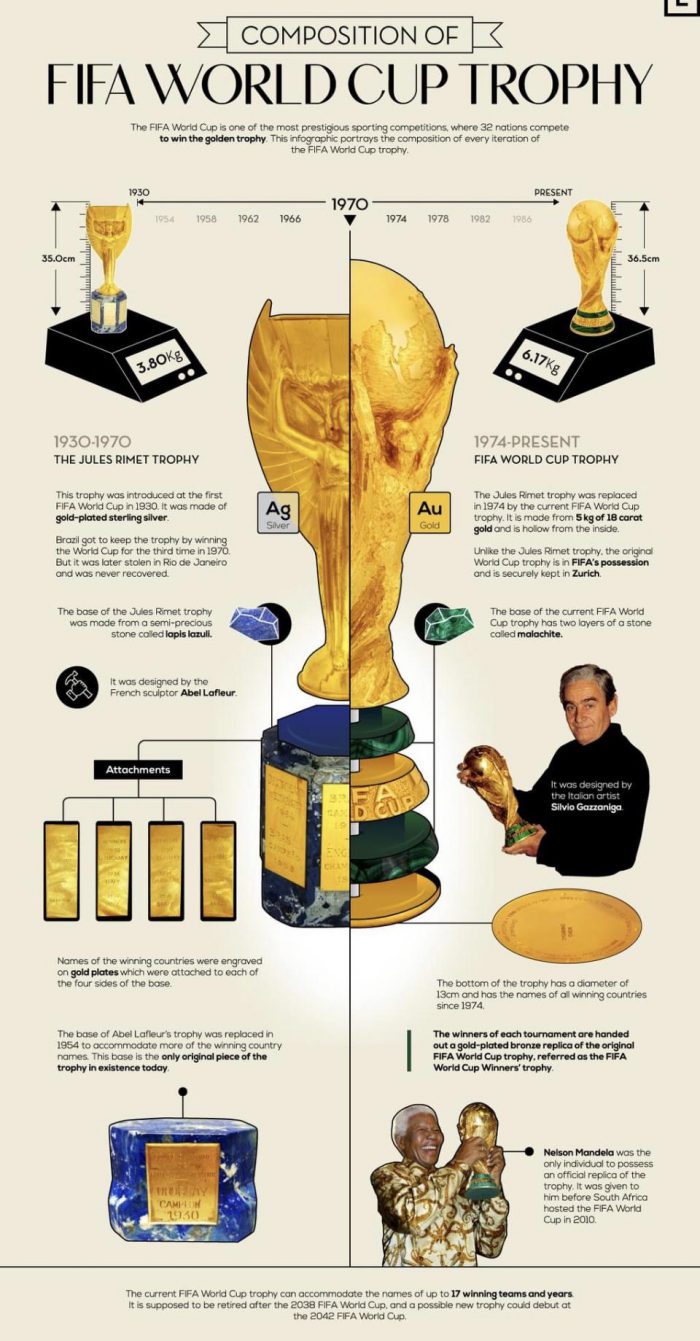
The FIFA World Cup is the highest prize in international football. Every four years, the world’s best take the field for the chance to lift its most recognizable trophy, and lauding that achievement are two gold statues of men. The FIFA World Cup Trophy, officially named the FIFA World Cup of Football, is a highly prized trophy awarded to the winner of the FIFA World Cup, the most prestigious football tournament in the world. The base of the trophy itself was designed in 1971 by sculptor Silvio Gazzaniga and features two handles and a cup designed after an upturned vase. Around this base are 16 columns that represent the 16 teams in competition at each World Cup.
The FIFA World Cup trophy has been around since 1974. It’s a beautiful, elegant European soccer cup that’s awarded to the winners of the men’s and women’s World Cups, respectively. It stands at just over 36 centimeters tall, with two handles on either side and a gold-plated base with the names of all previous winners inscribed in gold lettering. The FIFA World Cup trophy is one of the most recognizable sporting awards in the world—but how did it come about?
The FIFA World Cup Trophy is very precious and very heavy
The FIFA World Cup Trophy is made of 18 carat gold, and it consists of six parts: a base ring, three layers on top of that, and two handles. The entire trophy weighs 6.2 kg (13 lb). The design process for the trophy started in 1996 when FIFA announced that there would be a new design for their prestigious trophy. In 2016, FIFA announced that they were again making changes to the design of their prestigious prize after more than 20 years since it was last changed—and this time they were adding more gold!
The FIFA World Cup trophy is one of the most iconic trophies in all of sports. As we approach the next World Cup, it’s worth taking some time to look at how this incredible trophy was created and where it has been since its creation in 1974.
